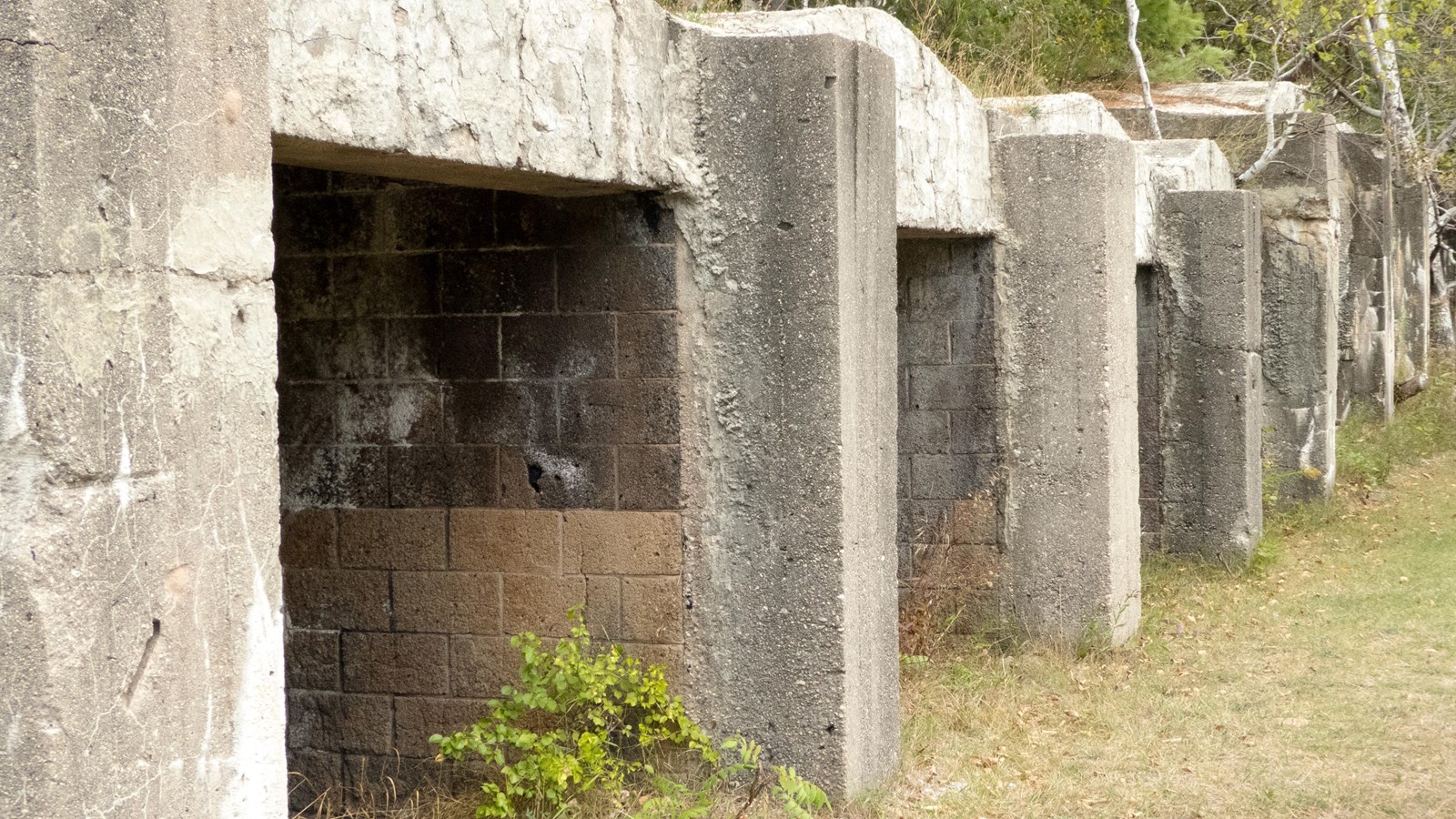Last updated: September 3, 2025
Place
Alligator Hill Charcoal Kilns

NPS credit
Audio Description
The first point of interest on this trail is a row of curious structures to the left of the trail. These concrete structures are charcoal kilns, and they were installed by lumberman Pierce Stocking who purchased the land in 1948 after the demise of Day Forest Estates.
He used these kilns to convert the waste from his sawmill into charcoal. The loose, dusty, random-sized material was packed in bags for shipment to stores in much of Michigan for sale to campers and picnickers.
The kilns are concrete ovens in which limbs, slabs, and other sawmill waste were stacked as tightly as possible. The open front was closed with concrete blocks and the wood set on fire just before the last blocks went in. Controlling the air intake was tricky: too much air and the wood was consumed, too little air and the fire went out. If successful, the fire burned slowly for several days. Once it was out, the charcoal was removed and spread to cool. Then it was moved to the bagging shack.
Day Forest Hill was one of the first managed forests in this part of Michigan. The owner, D. H. Day, protected the smaller trees to promote a future lumber harvest. When Pierce Stocking purchased the land in 1948, there was enough fairly mature growth to warrant a selective harvest. The sawdust pile from his mill can still be seen on the other side of Stocking Road. After the mature trees had been harvested, the mill was closed and the kilns abandoned.
